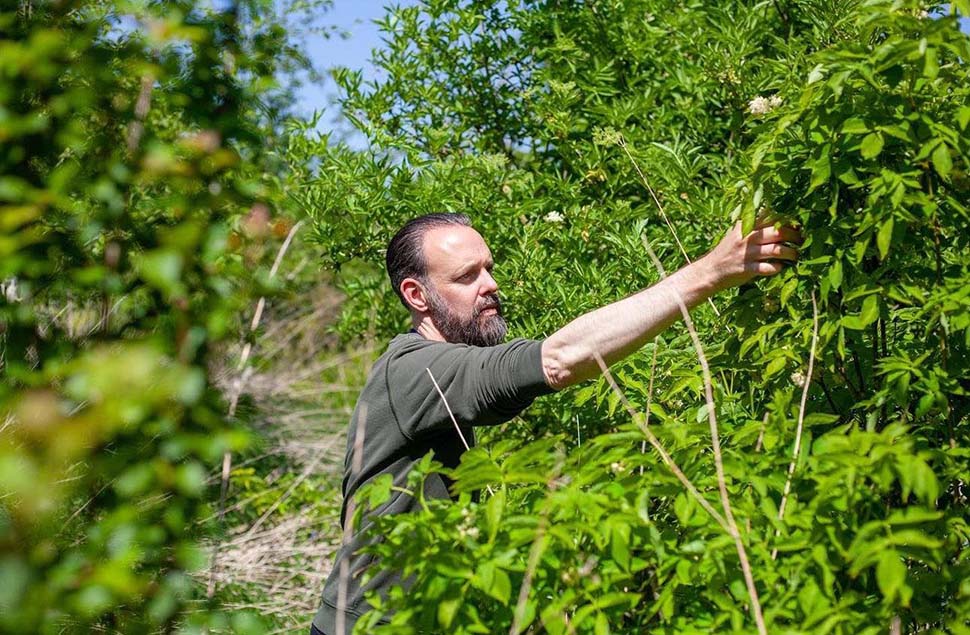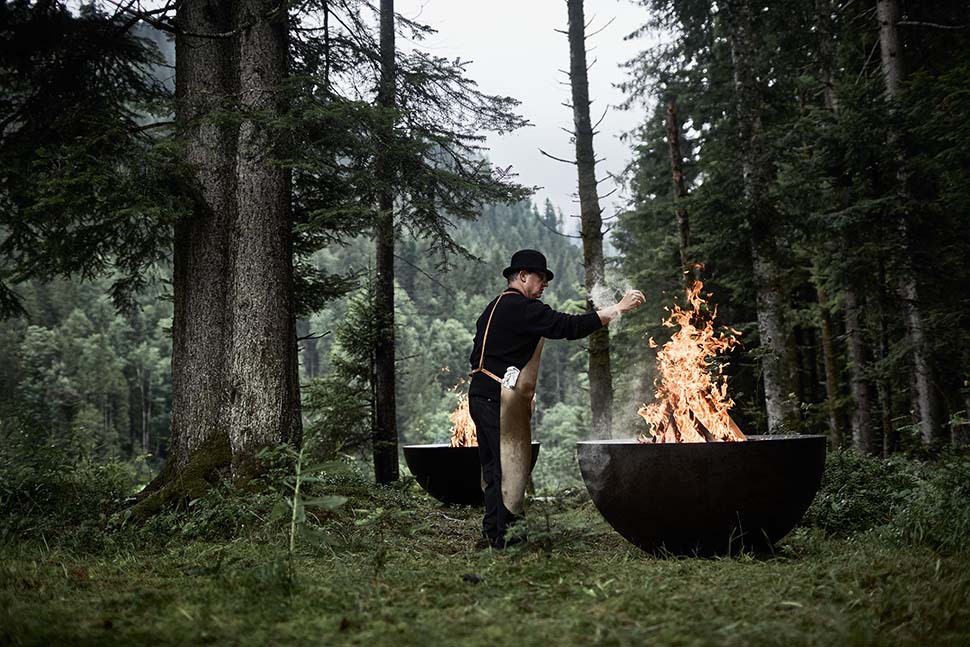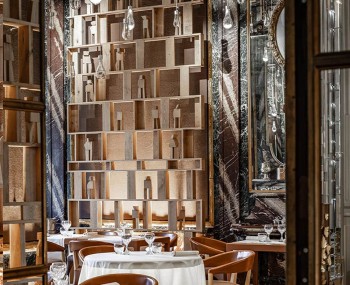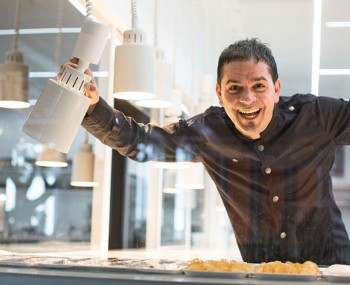Two visionary chefs have transformed forests and bogs into pantries of unexpected flavors. Emile van der Staak and Stefan Wiesner tell how wilderness can become the star of sustainable and surprising cuisine.
Cover photo: Mike Nicolaassen
Emile van der Staak: the chef who planted a forest
Emile van der Staak, an innovative chef in the Netherlands, has created his “Food Forest” near Nijmegen. It is not just a forest, but an ecosystem planted by hand to supply the restaurant De Nieuwe Winkel with rare and valuable ingredients. “It's not just a harvesting place,” , Emile explains to Rolling Pin, which grows exotic plants such as Sichuan pepper, lemons, figs, and the nashi, a Japanese pear with surprising flavor.

This approach is no accident. Fifteen years ago, his friend Wouter van Eck transformed an anonymous agricultural field into a 2.5-hectare self-sustaining forest, inspired by the principles of permaculture. Here, each plant supports the other, creating a healthy and resilient ecosystem, capable of hosting species that traditionally would not thrive in the Netherlands. The climatic conditions here are ideal for many plants that normally grow elsewhere,” van der Staak explains. This insight gave birth to his celebrated “botanical gastronomy”, which today makes him one of the most innovative vegan chefs in Europe.
Stefan Wiesner: the peat bog as secret pantry
In Switzerland, Stefan Wiesner has found the Entlebuch peat bog to be his source of inspiration. Chef of the Wiesner Mysterion restaurant, he uses wood, charcoal and even precious stones to create unique dishes.

In his “Hexenbleibe” (witch's abode), the air is saturated with ancient and mysterious scents. “Of birch you can eat everything,”, Wiesner says: the bark becomes broth, the charcoal mustard, while the juice is a precious elixir.
Unique flavors: from resin to marble
Wiesner does not stop at trees. Walking through the bog, he collects formic acid from an anthill, which he uses to flavor yogurt intended for marinating meat or fish."

I don't cook ants out of respect for precise life". Among his most recent creations is marble powder for strudel. “Each mineral has a unique flavor,” , Wiesner explains, showing how even the composition of water can affect the outcome of a dish.
Wood, game and ayurveda: the fusion of traditions
One of Wiesner's signature dishes is game marinated in beech and fir charcoal. “The venison feeds on fir, and I bring both back to the plate,”, explains the chef, in a circular approach that connects environment and gastronomy.

Meanwhile, van der Staak has found his signature ingredient in Chinese mahogany: the pink leaves, besides being decorative, contain 16 percent protein. From the wood, on the other hand, he makes a broth reminiscent of the classic chicken flavor.
A kitchen that looks to the future
Emile van der Staak and Stefan Wiesner represent a new generation of chefs exploring the untapped potential of local ingredients. They show that even in less favorable climates there is a wealth of flavors yet to be discovered.

“We are just at the beginning of this journey,”, they affirm. A challenging journey, certainly, but an incredibly fascinating one. And their guests, seated at the table, can only agree: each dish is a discovery, an exploration of flavors that defies convention and celebrates the extraordinary beauty of nature.











